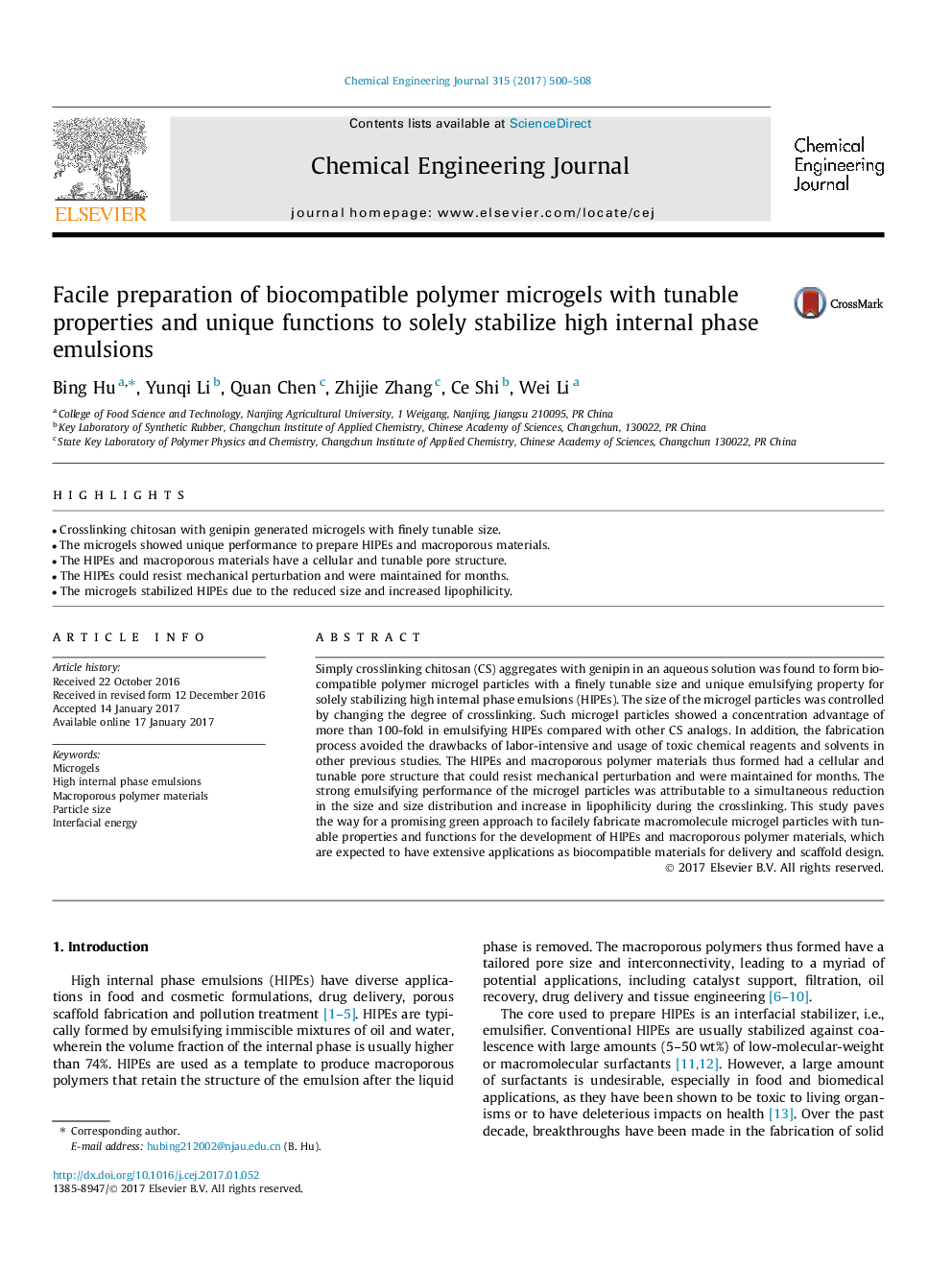| Article ID | Journal | Published Year | Pages | File Type |
|---|---|---|---|---|
| 6466411 | Chemical Engineering Journal | 2017 | 9 Pages |
â¢Crosslinking chitosan with genipin generated microgels with finely tunable size.â¢The microgels showed unique performance to prepare HIPEs and macroporous materials.â¢The HIPEs and macroporous materials have a cellular and tunable pore structure.â¢The HIPEs could resist mechanical perturbation and were maintained for months.â¢The microgels stabilized HIPEs due to the reduced size and increased lipophilicity.
Simply crosslinking chitosan (CS) aggregates with genipin in an aqueous solution was found to form biocompatible polymer microgel particles with a finely tunable size and unique emulsifying property for solely stabilizing high internal phase emulsions (HIPEs). The size of the microgel particles was controlled by changing the degree of crosslinking. Such microgel particles showed a concentration advantage of more than 100-fold in emulsifying HIPEs compared with other CS analogs. In addition, the fabrication process avoided the drawbacks of labor-intensive and usage of toxic chemical reagents and solvents in other previous studies. The HIPEs and macroporous polymer materials thus formed had a cellular and tunable pore structure that could resist mechanical perturbation and were maintained for months. The strong emulsifying performance of the microgel particles was attributable to a simultaneous reduction in the size and size distribution and increase in lipophilicity during the crosslinking. This study paves the way for a promising green approach to facilely fabricate macromolecule microgel particles with tunable properties and functions for the development of HIPEs and macroporous polymer materials, which are expected to have extensive applications as biocompatible materials for delivery and scaffold design.
